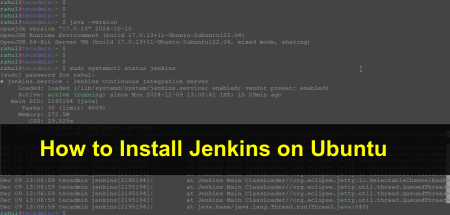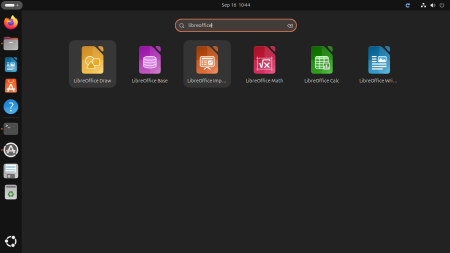Pure-FTPd is a free and secure FTP server. It doesn’t provide useless bells and whistles, but focuses on efficiency and ease of use. It provides simple answers to common needs, plus unique useful features for personal users as well as hosting providers.

This how to guide will help you to setup Pure-FTPD with MySQL as user database. Also providing detailed instruction to create user and test.
Step 1: Install MySQL ( Skip if Already Have )
Firstly we need to install MySQL on our system using following steps of command.
# yuminstall mysql mysql-server
click here for detailed instruction’s for mysql installation.
Step 2: Install Pure-FTPD
Use following command to install pure-ftpd on your linux system.
# yuminstall pure-ftpd
Step 3: Create MySQL User and Database
After installation pure-ftpd package, lets create a mysql database, table and user for storing user information.
#mysql -u root -p Enter password: mysql> CREATE DATABASEpureftpd ; mysql> GRANT ALL ONpureftpd .* to 'pureftpd '@'localhost' IDENTIFIED BY '_password_ '; mysql> FLUSH PRIVILEGES; mysql> usepureftpd ; mysql> CREATE TABLE `users` ( `ID` int(11) NOT NULL AUTO_INCREMENT, `User` varchar(32) NOT NULL DEFAULT '', `Password` varchar(64) NOT NULL DEFAULT '', `Uid` int(3) NOT NULL DEFAULT '500', `Gid` int(3) NOT NULL DEFAULT '500', `Dir` varchar(255) NOT NULL DEFAULT '', `QuotaSize` int(4) NOT NULL DEFAULT '50', `Status` enum('0','1') NOT NULL DEFAULT '1', `ULBandwidth` int(2) NOT NULL DEFAULT '100', `DLBandwidth` int(2) NOT NULL DEFAULT '100', `Date` date NOT NULL DEFAULT '0000-00-00', `LastModif` varchar(255) NOT NULL DEFAULT '', PRIMARY KEY (`ID`), UNIQUE KEY `User` (`User`), KEY `Uid` (`Uid`), KEY `Gid` (`Gid`), KEY `Dir` (`Dir`) ) ENGINE=MyISAM AUTO_INCREMENT=2 DEFAULT CHARSET=utf8; mysql> quit
Step 4: Configure Pure-FTPD
We are going to configure pure-ftpd to store user login details in mysql database. First edit pure-ftpd main configuration file
# vim /etc/pure-ftpd/pure-ftpd.conf
and make following changes.
ChrootEveryoneyes MaxClientsNumber50 MaxClientsPerIP2 VerboseLogyes AnonymousOnlyno NoAnonymousyes MaxIdleTime15 MySQLConfigFile/etc/pure-ftpd/pureftpd-mysql.conf PAMAuthenticationno UnixAuthenticationno
After making changes in pure-ftpd configuration, let edit pure-ftpd mysql configuration file
# vim /etc/pure-ftpd/pureftpd-mysql.conf
and update following variables
MYSQLUserpureftpd MYSQLPassword_password_ MYSQLDatabasepureftpd MYSQLCryptmd5
Step 5: Test Pure-FTPD Setup
At this step we have completed pure-ftpd setup, Now we need to test our setup by creating our first ftp account. To test our setup, first we need to create an user in linux system. After that we will use that users UID and GID to create our virtual ftp accounts.
Create User Account:
# useradd demouser1 # passwd demouser1
Get UID and GID of this Account:
# cat /etc/passwd | grep demouser1 demouser1:x:504:505::/home/demouser1:/bin/bash
As per above output we found that usres UID is 504 and GID is 505.
Create FTP Account
Lets login to mysql server or access through phpMyAdmin and create your first account. For this tutorial, I am using command line.
# mysql -u root -p
Enter password:
mysql> INSERT INTO `users` (`User`, `Password`, `Uid`, `Gid`, `Dir`, `QuotaSize`,
`Status`, `ULBandwidth`, `DLBandwidth`, `Date`, `LastModif`)
VALUES ('ftpuser1', md5('_password_'), '504', '505', '/home/demouser1',
'20', 2, '10', '10', now(), '');
mysql> quit
As per above query we have successfully created our first ftp account
Connect to FTP Server using newly created ftp account and try to upload a test file.
C:>ftp ftp.tecadmin.net Connected to ftp.tecadmin.net. 220---------- Welcome to Pure-FTPd [privsep] [TLS] ---------- 220-You are user number 1 of 50 allowed. 220-Local time is now 21:39. Server port: 21. 220-This is a private system - No anonymous login 220-IPv6 connections are also welcome on this server. 220 You will be disconnected after 15 minutes of inactivity. User (ftp.tecadmin.net:(none)):ftpuser1 331 User ftpuser1 OK. Password required Password: 230 OK. Current restricted directory is / ftp>put test.txt 200 PORT command successful 150 Connecting to port 57216 226-File successfully transferred 226 0.004 seconds (measured here), 0.65 Mbytes per second ftp: 2593 bytes sent in 0.00Seconds 2593.00Kbytes/sec. ftp> bye 221-Goodbye. You uploaded 3 and downloaded 0 kbytes. 221 Logout. C:>
As per above results we have successfully connected to ftp user and uploaded a test file. Lets check the permissions of that files on server.
# ls -l /home/demouser1/test.txt -rw-r--r-- 1 demouser1 demouser1 2525 Dec 4 21:39 /home/demouser1/test.txt
Now you can see that the files gets the permissions of that user which UID, GID we have used for that FTP accounts.




1 Comment
i m getting an error in the centos 6 pureftpd souce code compilation with mysql parameter…..
the configuration command i used is given below :-
./configure –prefix=/usr/local/pureftpd –with-mysql=/usr/local/lib/ –with-virtualhosts
configure: error: Your MySQL client libraries aren’t properly installed